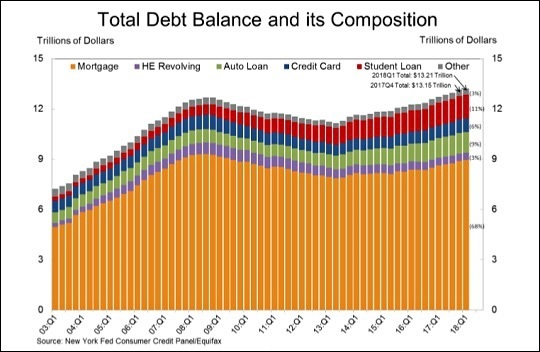Courtesy of Pam Martens
By Pam Martens and Russ Martens
Approximately two-thirds of U.S. gross domestic product (GDP) derives from the consumer. Without financially healthy consumers, the economy cannot prosper. In a July 30 interview on the cable news channel, CNBC, Jamie Dimon, the Chairman and CEO of JPMorgan Chase, the largest bank in the U.S., said that “the consumer’s in good shape; their balance sheet’s in good shape.”
On May 17 the Center for Microeconomic Data at the Federal Reserve Bank of New York released its Quarterly Report on Household Debt and Credit which raised some notable questions as to whether Jamie Dimon actually has his finger on the pulse of the U.S. consumer.
According to the report, “aggregate household debt balances increased in the first quarter of 2018, for the 15th consecutive quarter. As of March 31, 2018, total household indebtedness stood at $13.21 trillion,” which is $536 billion higher than it was at the end of the third quarter of 2008. That was when the country was ravaged by the worst financial crash since the Great Depression.
The report further notes: “The flow into 90+ day delinquency for credit card balances has been increasing notably for the last year, while the flow into 90+ day delinquency for auto loan balances has been slowly trending upward since 2012.” Not paying your debt is typically not associated with a strong consumer balance sheet.
…




